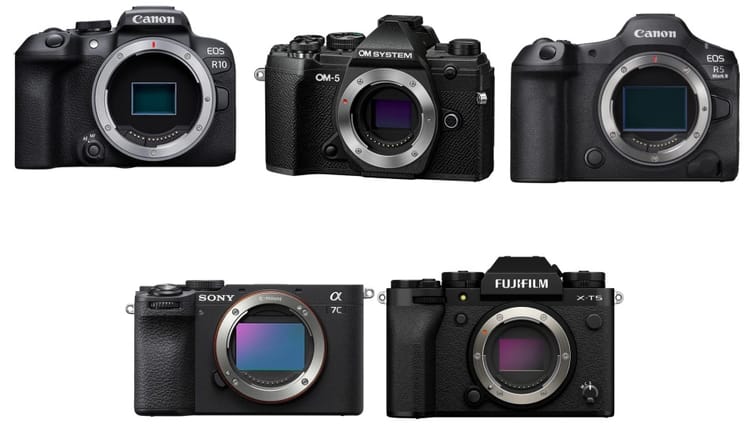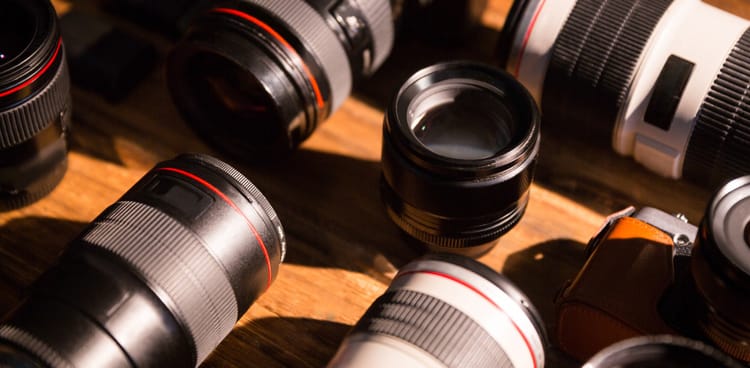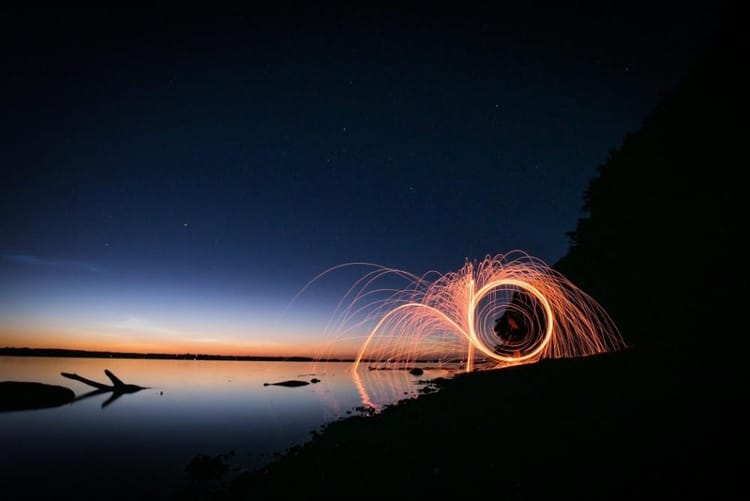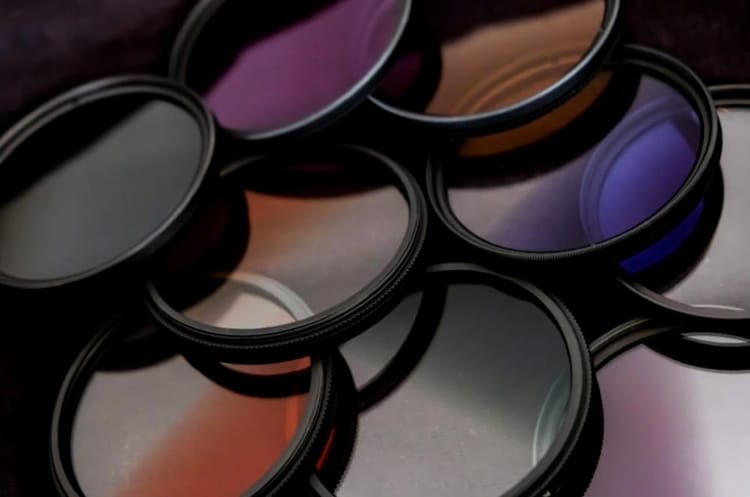How to Choose the Perfect Camera Bag for Your Gear
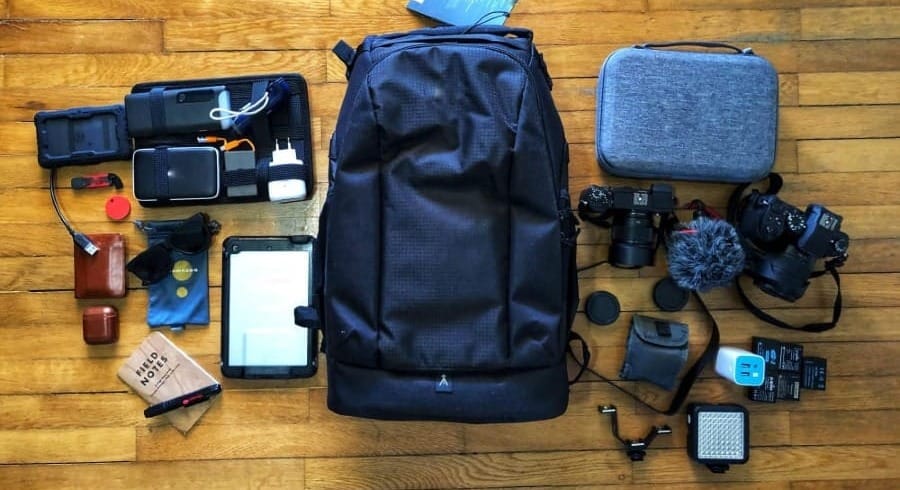
Introduction:
Choosing the right camera bag is a crucial decision for any photographer, whether you’re a professional or a hobbyist. A well-suited camera bag not only keeps your gear organized and protected but also makes your photography sessions more efficient and enjoyable. With so many different types, styles, and sizes available, it can be overwhelming to know where to start. The perfect camera bag should fit your specific gear needs while also offering comfort and convenience, especially if you’re traveling or shooting on location. Additionally, your camera bag is an essential safeguard, protecting your expensive equipment from the elements and accidental damage. In this guide, we’ll break down the key factors to consider when selecting a camera bag, helping you find one that meets your requirements in terms of size, protection, accessibility, and style. By the end, you’ll have all the tools you need to make an informed choice.
1. Assessing Your Camera Gear
The first step in choosing the perfect camera bag is to take stock of the gear you intend to carry. Your equipment will dictate the size, capacity, and style of the bag that best fits your needs. Without an accurate assessment, you might end up with a camera bag that is either too small to accommodate everything or too large, adding unnecessary bulk to your photography kit.
List Your Equipment
Before diving into camera bag options, make a list of all the gear you typically bring with you. This includes your camera body, lenses, battery packs, memory cards, filters, and other accessories like a flash or a tripod. Think about whether you need a bag that can hold everything you own or just the essentials for a typical shoot. If you use multiple lenses or have larger equipment like a DSLR with a battery grip, you’ll need a bag with more internal space and adjustable compartments.
Consider Future Additions
One common mistake photographers make when selecting a camera bag is failing to account for future gear purchases. If you plan on expanding your collection, whether by adding new lenses, upgrading your camera body, or investing in additional accessories, it's wise to choose a camera bag with some extra room for growth. A bag that fits your current gear snugly might not be practical once you acquire new equipment, leading to the need for another purchase down the line.
By thoroughly assessing your gear and considering potential additions, you’ll have a clearer idea of the bag size and internal layout that will best serve your photography needs. A well-chosen camera bag will not only fit your current equipment but also offer flexibility for future changes in your kit.
2. Bag Types: Finding the Right Style
When choosing a camera bag, it’s essential to consider the type of bag that will best suit your shooting style, the environments you’ll be working in, and the amount of gear you plan to carry. Different styles of camera bags offer various benefits, from portability and quick access to maximum storage and protection. Understanding the pros and cons of each type will help you make an informed decision.
Backpack
A camera backpack is ideal for photographers who carry a significant amount of gear or need to travel long distances. Backpacks evenly distribute weight across both shoulders, making them comfortable for extended periods. They often come with multiple compartments for cameras, lenses, and accessories and can even have dedicated space for a laptop or tablet. If you're into travel, landscape, or wildlife photography, a backpack camera bag can provide ample storage for your gear and offer the protection needed in rugged environments. The downside is that it may take longer to access your gear compared to other styles.
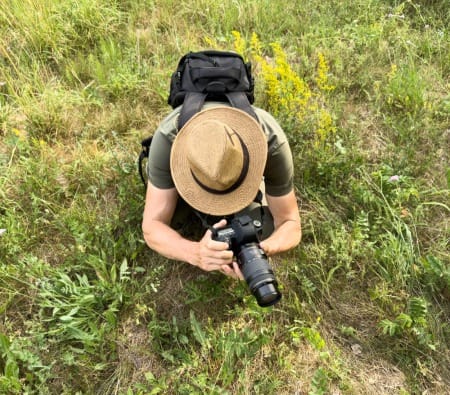
Messenger Bag
Messenger-style camera bags are perfect for photographers who need quick access to their gear. Worn over one shoulder, a messenger bag allows you to swing the bag to your front and grab your camera or lenses with minimal effort. It’s an excellent choice for street photographers or those doing casual shoots. These bags are generally lighter and more compact than backpacks but may not offer as much padding or storage space. If you're carrying minimal gear, a messenger camera bag offers a practical and stylish solution.
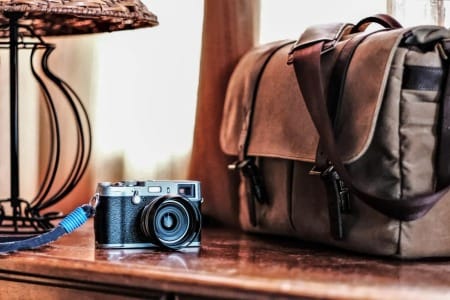
Sling Bag
A sling bag combines the benefits of a backpack and a messenger bag. It’s worn across your body like a backpack but with a single strap, allowing for quick access by sliding the bag around. It’s compact, lightweight, and ideal for photographers who need a balance between mobility and gear protection.
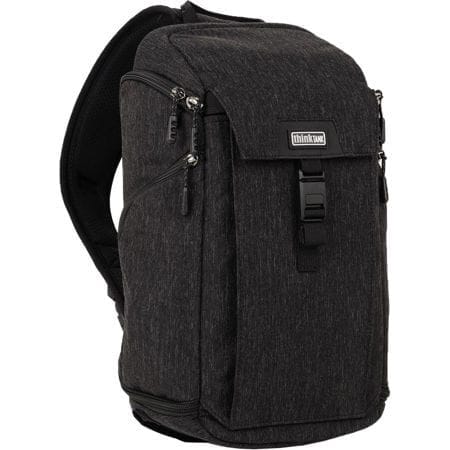
Each type of camera bag caters to different photography styles and needs, so understanding how you use your gear and how much you carry will guide you toward the best choice.
3. Protection and Padding
One of the most important factors when selecting a camera bag is the level of protection it offers for your gear. Cameras and lenses are expensive and delicate, so ensuring they are well-protected from impact, moisture, and wear is crucial. The right camera bag will provide ample padding and safeguards to keep your equipment safe, even in challenging environments or during transport.
Internal Dividers and Compartments
A good camera bag will have customizable internal dividers to securely store your gear. These padded dividers act as a cushion between each piece of equipment, preventing them from knocking into each other during movement. Adjustable dividers allow you to configure the space according to the size and shape of your camera, lenses, and accessories. This ensures everything has its place, reducing the risk of damage. For photographers who carry multiple lenses or fragile gear, well-designed internal compartments are essential.
Weather Resistance
Many outdoor or travel photographers face unpredictable weather conditions, so it's important that your camera bag can protect your gear from rain, snow, or dust. Look for camera bags made from water-resistant materials or those that come with a built-in rain cover. Some high-end bags even feature waterproof zippers and seams to ensure that no moisture seeps in. If you shoot in extreme environments, a weather-resistant camera bag will give you peace of mind that your gear stays dry and safe.
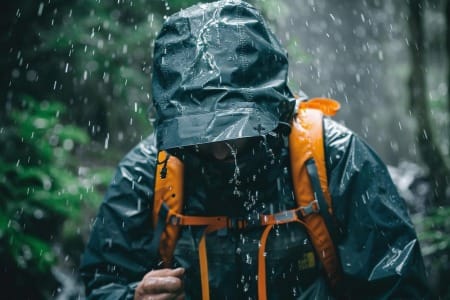
Shock Absorption
Accidental drops or bumps are common, especially when you're on the move. To protect against these mishaps, your camera bag should have sufficient padding not only inside but also around the exterior. Thick padding along the bottom and sides of the bag can help absorb shocks from impacts or falls. Some bags also include reinforced corners or rubberized bottoms for extra durability.
A camera bag with excellent protection and padding will keep your valuable gear secure, allowing you to focus on capturing the perfect shot without worrying about damage.
4. Comfort and Ergonomics
When selecting a camera bag, comfort is a critical factor, especially if you plan to carry your gear for extended periods. A bag that lacks an ergonomic design can cause strain and fatigue, making your photography experience less enjoyable. Whether you’re hiking through rugged landscapes, shooting a wedding all day, or simply walking around town, a comfortable camera bag ensures that you can focus on capturing great images rather than dealing with back or shoulder pain.
Padded Straps and Back Support
One of the most important comfort features in a camera bag is padded straps. Whether it’s a backpack, messenger, or sling bag, thick, adjustable padding on the straps helps distribute weight evenly and reduces pressure on your shoulders. In the case of backpacks, look for models that also feature padded back panels. Some camera backpacks even come with lumbar support and ventilation systems, ensuring your back stays cool and comfortable on long shoots. Without proper padding, a camera bag can become uncomfortable quickly, especially when loaded with heavy gear.
Weight Distribution
Proper weight distribution is essential for preventing fatigue, particularly with larger setups. Backpacks offer the best distribution since they spread the weight across both shoulders and the back. If you prefer a messenger or sling-style camera bag, opt for one that offers balanced weight placement and doesn’t put too much strain on one side of your body. Adjustable straps help ensure the bag sits securely and comfortably, minimizing strain even during long sessions.
Breathability
For photographers working in hot or humid environments, the breathability of a camera bag can significantly impact comfort. Look for bags with mesh or breathable fabric along the back panel or straps, which allow air to circulate and reduce sweat buildup. This feature is especially important for outdoor or travel photographers who may be carrying their camera bags for extended hours in different weather conditions.
Prioritizing comfort and ergonomics ensures that your camera bag becomes an asset, not a burden, as you move through your shoots.
5. Storage and Accessibility Features
A camera bag should not only protect your gear but also make it easy to access and organize your equipment during shoots. The right storage features and accessibility options can significantly improve your workflow, saving you time and ensuring you’re always ready to capture the perfect shot. From quick-access compartments to specialized pockets for accessories, these features make all the difference in how efficient and functional your camera bag is.
Quick Access Compartments
One of the most valuable features of a camera bag is a quick-access compartment. These compartments allow you to retrieve your camera or other essential gear without fully opening the bag, which is particularly useful during fast-paced shoots where every second counts. Whether it's a side-entry pocket on a backpack or a top flap on a messenger bag, quick-access points ensure that you can grab your camera or lenses with minimal hassle. This is especially handy for street photographers or event shooters who need to react quickly to changing situations.
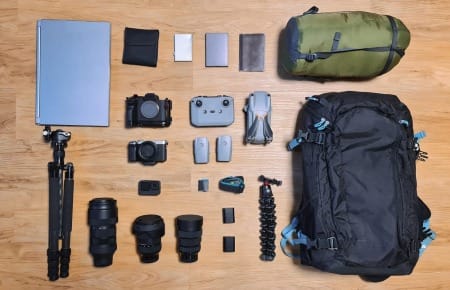
Laptop and Tablet Compartments
For photographers who frequently edit on the go or need to transfer files immediately, having a dedicated laptop or tablet compartment in your camera bag is a must. Many camera bags now come with padded sleeves designed to hold a laptop or tablet securely, ensuring your tech is protected while traveling. Whether you're editing on location or backing up your files, a laptop compartment ensures you don’t need a separate bag for your digital devices. Make sure to choose a bag that fits the size of your laptop or tablet and still leaves room for your camera gear.
External Pockets and Straps
In addition to internal storage, external pockets and straps can add versatility to your camera bag. Pockets on the outside are great for storing small items like memory cards, batteries, or even personal items like keys or a phone. Some camera bags also come with external straps or loops designed to carry a tripod, light stand, or water bottle, freeing up internal space for your gear. This added functionality can be a game-changer for travel or landscape photographers who need to carry extra equipment.
A camera bag with the right storage and accessibility features will keep you organized and ready to capture every moment, ensuring you have everything you need at your fingertips.
6. Durability and Build Quality
The durability and build quality of your camera bag are essential considerations, especially for photographers who regularly travel, shoot in rugged environments, or handle their gear frequently. A well-constructed camera bag should not only withstand the rigors of daily use but also protect your valuable equipment from wear and tear. The materials, hardware, and overall craftsmanship of the bag play a significant role in how long it will last and how well it can safeguard your gear.
Materials
The material used in the construction of a camera bag is one of the primary indicators of its durability. High-quality materials like ballistic nylon, canvas, or waterproof polyester are excellent choices for a long-lasting bag. These materials offer resistance to abrasions, tearing, and weather conditions, which is crucial for photographers working outdoors or in unpredictable environments. Leather camera bags, while offering a more stylish and professional appearance, can also be durable but may require more maintenance to keep in good condition. When choosing a camera bag, it's important to select materials that can endure both everyday use and occasional harsh conditions.
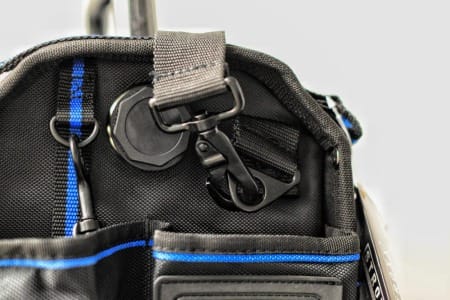
Zippers and Hardware
Often overlooked, the zippers, buckles, and other hardware on your camera bag are just as important as the material. Sturdy, weather-sealed zippers protect your equipment from dust, rain, and accidental spills, while cheap zippers are prone to breaking or jamming, leaving your gear exposed. High-quality buckles and clips are necessary for keeping the bag securely closed and the gear safely in place, especially when moving. Always check the hardware when choosing a camera bag to ensure it can handle the weight and demands of your equipment.
Brand Reputation
Another aspect of durability is the reputation of the brand. Well-known camera bag manufacturers like Lowepro, Peak Design, and Think Tank are trusted for their high-quality materials, craftsmanship, and long-lasting designs. Investing in a camera bag from a reputable brand can give you confidence that your gear will be protected over time and in various shooting conditions.
Choosing a camera bag with strong materials, reliable hardware, and a reputable brand ensures that your investment will last, keeping your gear safe through all your photography adventures.
7. Budget Considerations
While it's easy to get swept up in the premium features of high-end camera bags, it's important to consider your budget and find a camera bag that offers the best value for your money. Camera bags come in a wide range of prices, from budget-friendly options to high-end, professional-grade models. Finding the right balance between affordability and functionality is key, especially when you're just starting out or if you're upgrading your gear and need to be mindful of your spending.
Affordable Options
For photographers on a tight budget, there are many affordable camera bag options that still offer good protection and essential features. Brands like AmazonBasics, Neewer, or Tenba offer budget-friendly options that don’t sacrifice functionality. These camera bags may not have all the bells and whistles of more expensive models, but they often provide adequate padding, storage compartments, and weather resistance for beginner photographers or hobbyists. When selecting an affordable camera bag, focus on the core features: protection, storage capacity, and comfort.
Investment Bags
For professional photographers or those who regularly carry high-end gear, investing in a more expensive camera bag can be a smart choice. Premium camera bags from brands like Peak Design, Lowepro, or Think Tank offer superior build quality, enhanced protection, and added features like modular systems or high-tech materials. These bags are built to last and are often designed with specialized compartments for larger gear, making them ideal for photographers who need to carry multiple camera bodies, lenses, and accessories. Though the upfront cost is higher, the longevity and additional features of investment bags often make them a worthwhile purchase in the long run.
Finding the Balance
Ultimately, the goal is to find a camera bag that meets your needs without overspending. Consider how often you’ll use the bag, the environments you’ll be shooting in, and the level of protection your gear requires. It’s possible to find a bag that balances cost with functionality, ensuring that you don’t sacrifice quality while staying within your budget.
By carefully evaluating your budget and the features you prioritize, you can find a camera bag that offers excellent value, protecting your gear without breaking the bank.
8. Additional Features to Look For
When choosing the perfect camera bag, it’s not just about protection, comfort, and storage capacity. Many camera bags come with additional features that can enhance your shooting experience and make carrying your gear more efficient. These extra details may seem minor, but they can make a significant difference, especially for photographers who shoot in diverse environments or need extra functionality from their gear.
Modular Systems
One of the most versatile additional features you can find in a camera bag is a modular system. Some bags, like those from Peak Design or Lowepro, offer customizable components that allow you to add or remove sections based on your specific needs. These modular systems give you the flexibility to expand your storage space when necessary, making the bag adaptable for different types of shoots. For example, you might add extra compartments for lenses during a landscape photography trip or remove them for a more streamlined setup in a casual street photography session. This flexibility makes a modular camera bag an excellent investment for photographers with varying gear needs.
Anti-theft Features
Security is an important consideration, especially for travel photographers or those who work in crowded areas. Some camera bags are designed with anti-theft features to keep your gear safe. These features can include lockable zippers, hidden pockets, or slash-proof straps that prevent theft in high-risk areas. If you're frequently shooting in urban environments or traveling to new locations, these features can provide extra peace of mind, ensuring that your expensive equipment stays secure.
Style and Aesthetics
While functionality should be the top priority, many photographers also care about the aesthetics of their camera bag. Fortunately, many manufacturers design bags that are both stylish and practical. Leather camera bags, for example, offer a sleek, professional look, while modern, minimalistic designs appeal to those who prefer a clean and understated style. Finding a camera bag that matches your personal aesthetic can help you feel more confident and professional on shoots, especially when working with clients.
By considering these additional features—modular systems, anti-theft measures, and style—you can choose a camera bag that not only protects your gear but also enhances your overall photography experience.
Conclusion
Choosing the perfect camera bag is about more than just finding a place to store your gear; it’s about ensuring your equipment is protected, accessible, and easy to carry, no matter where your photography takes you. By carefully considering factors such as your gear requirements, bag type, protection, comfort, storage features, durability, and budget, you can find a camera bag that meets both your practical needs and personal preferences. Whether you're a beginner looking for an affordable option or a professional seeking a high-end, modular bag, the right camera bag can make a significant difference in your workflow and comfort. Ultimately, a well-chosen bag will allow you to focus on what matters most—capturing stunning images—while keeping your gear safe and organized. With these guidelines in mind, you’ll be well-prepared to select a camera bag that fits your style, protects your investment, and enhances your photography experience.

